Fujifilm X-T3 Review
Fujifilm X-T3
The best mirrorless all-rounder you can buy right now
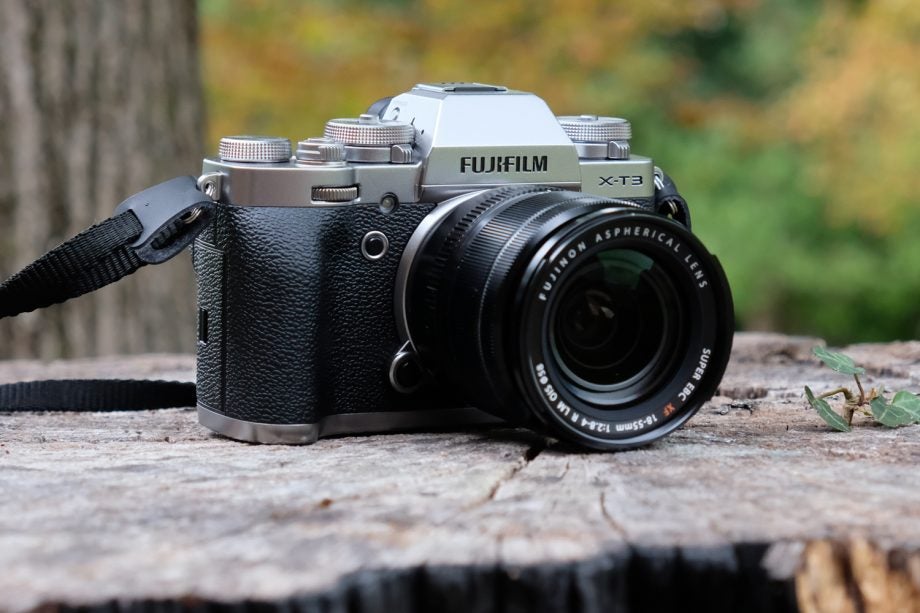
Verdict
Pound for pound, the Fujifilm X-T3 is the best mirrorless camera you can buy right now.
Pros
- Superb autofocus
- Excellent image quality in JPEG and RAW
- Speedy continuous shooting for capturing action
- Impressive 4K video quality and shooting options
- A design classic with great handling
- Huge range of customisable controls
Cons
- No in-body image stabilisation
- Mediocre battery life
- Screen doesn't fully articulate
Key Specifications
- Review Price: £1349 (body only)
- 26-megapixel APS-C sensor
- 425-point hybrid AF system
- 3.69-million-dot electronic viewfinder
- 4K, 60fps 10-bit video capture
- Available in black or silver
- ISO range of 160-12800 (expands to 80-51200)
What is the Fujifilm X-T3?
Fujifilm’s X-T3 is a mirrorless all-rounder and successor to the Fujifilm X-T2, one of the best sub-£1500 cameras of recent years.
Praised for its rich, atmospheric JPEGs and tactile shooting experience, the X-T2’s vintage design also made it one of the most desirable cameras around.
This means that, externally, the Fujifilm X-T3 hasn’t changed much. It’s still a weatherproof, magnesium alloy beauty with a generous helping of customisable dials and buttons.
But inside are significant sensor and processor upgrades that turn it from being a largely stills-focused camera into an all-rounder with video powers to challenge the likes of Panasonic’s GH5.
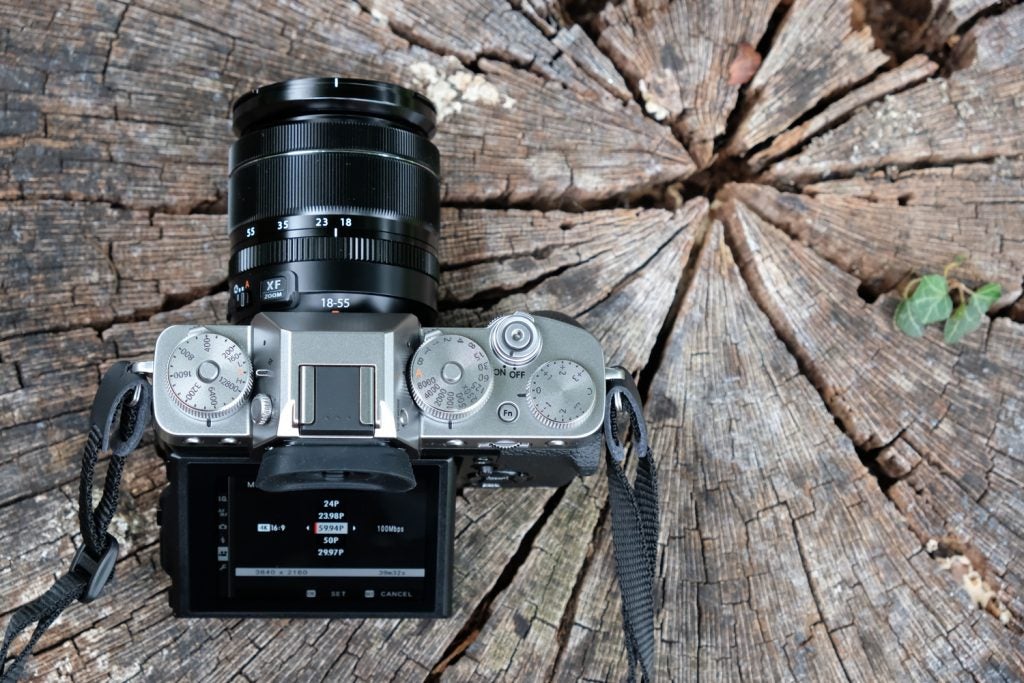
One of the X-T3’s big appeals is its huge range of tactile dials and buttons.
As before, the X-T3 is based on an APS-C sensor, which is smaller than the full-frame equivalents found in new mirrorless contenders like Nikon’s Z Series and Canon’s EOS R.
Yet sensors like Fujifilm’s X Trans chip allow cameras like the X-T3 to be smaller, lighter and more affordable equivalents to full-frame models.
As such, the X-T3 costs a very reasonable £1,349 (body only). Combine this with Fujifilm’s excellent range XF lenses (which stands at 31 and counting) and you have a very tempting proposition for both enthusiastic amateurs and pro shooters.
So do the Fujifilm X-T3’s improvements mean it’s again shaping up to be the complete mirrorless all-rounder? The answer is an emphatic yes.
Related: Mirrorless vs DSLR: what’s the difference?
Fujifilm X-T3 – Design and handling
While significantly smaller than a DSLR, the X-T3 is relatively large for an APS-C mirrorless camera. It’s slightly heavier than its predecessor at 539g, and 10mm wider too.
This isn’t necessarily a bad thing – its superbly built, magnesium alloy body feels rock solid in the hand and nicely balanced with most lenses. Camera size is a personal thing, but if you’re looking for DSLR-style handling without the bulk, then I’d say the X-T3 is right in the sweet spot. Its baby brother, the Fujifilm X-T20, or Sony’s A6500 are always options if you want something more travel-sized.
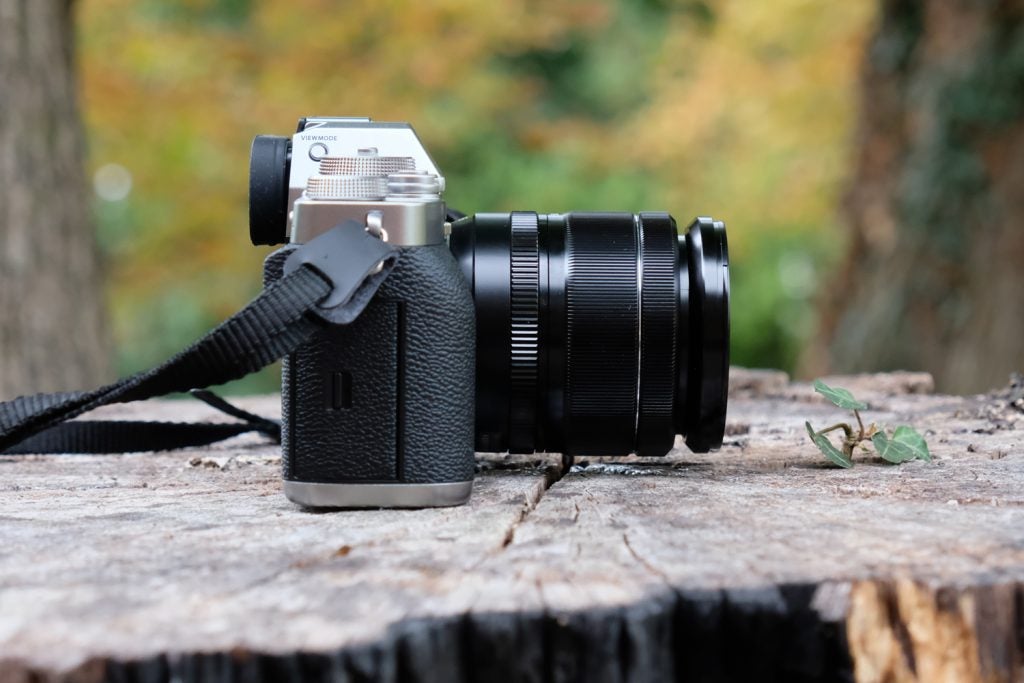
The X-T3 feels nicely balanced in the hand, whether you pair it with a prime lens or a zoom lens.
What really distinguishes X-T cameras from their mirrorless rivals are their analogue dials. These give it a fun, tactile shooting experience that’s also very customisable. Most of its buttons can be re-configured to do anything from checking focus to changing ISO. One particularly handy option is being able to add ISO to the front dial, which means you can tweak it without taking your eye from the viewfinder.
The eagle-eyed will notice a few physical tweaks from the X-T2. The X-T3’s viewfinder is slightly more prominent for a bit of extra ‘nose clearance’, its rear buttons are now a little larger, and the thumb grip is a bit chunkier to help keep it balanced. The main dials (ISO, shutter speed and exposure compensation) are also slightly bigger and easier to turn.
The biggest external upgrade to the Fujifilm X-T3, though, is its viewfinder. You now get the same EVF as the one found in the pricier Fujifilm X-H1, which means a sharp, 3.69-million-dot resolution with a 60fps refresh rate (or 100fps in ‘boost mode’).
Strangely, the viewfinder’s 0.75x magnification means it’s fractionally smaller than its predecessor’s, but far more noticeable to me was that resolution boost. It’s a joy to shoot with and more than good enough for anyone nervous about making the leap from a DSLR’s optical viewfinder.
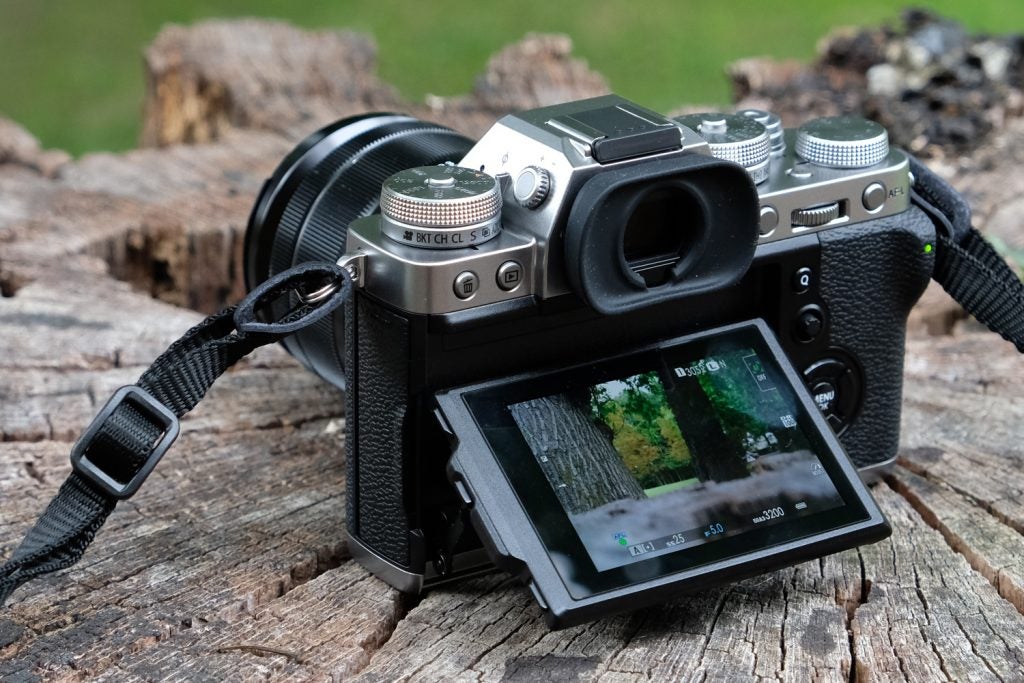
Unlike its predecessor, the X-T3’s screen is now touch-sensitive. But it unfortunately doesn’t fully articulate, like the X-T100’s display.
The news is more mixed when it comes to the X-T3’s 3.2-inch, LCD screen. It’s now touch-sensitive (hooray), which means you can tap subjects to focus on them and swipe through photos. But it still uses the same three-axis tilting action as before.
This isn’t necessarily a bad thing and its side-folding mechanism is useful if you shoot regularly in portrait. It’s just a shame you don’t get the excellent, fully articulating screen that Fujifilm recently introduced on the cheaper X-T100 – particularly as there are now built-in microphone and headphone ports for vloggers.
Still, there is one final bonus next to those two sockets – a USB-C port, which supports direct charging. This feature is fast becoming standard on mirrorless cameras and lets you top up the battery via an external battery pack while on the move. Very handy.
Related: Best camera 2018
Fujifilm X-T3 – Features and performance
Externally, the X-T3 is only a mild improvement on its predecessor. But tear it open and you’ll find out why it’s one of the best mirrorless all-rounders yet.
At its heart are a new ‘backside illuminated’ 26.1-megapixel X-Trans CMOS 4 sensor and an X Processor 4 chip. Together, these bring a host of improvements, with the three biggest being autofocus, burst shooting and video performance.
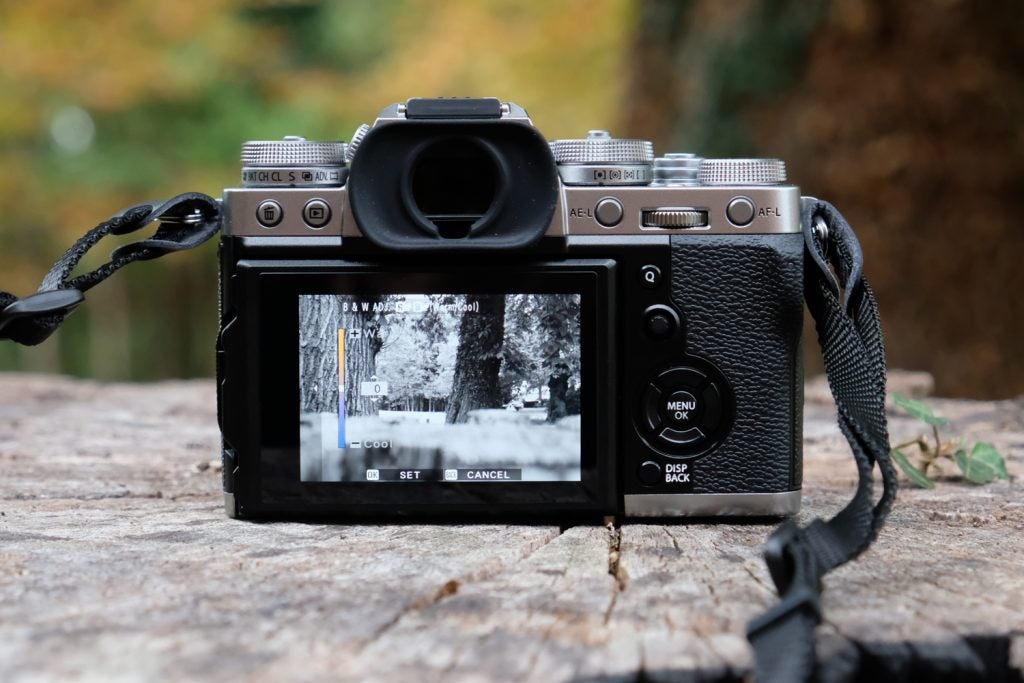
The Monochrome mode lets you make small adjustments to the temperature, from cool to sepia.
First, that autofocus. With ‘phase detection pixels’ now spread right across its whole sensor and a total 425 autofocus points, the Fujifilm X-T3 can follow moving subjects around a scene and keep them in focus much more reliably than before. By comparison, that’s the same number of autofocus points as Sony’s A6500 and significantly more than a DSLR like the Nikon D500, with the X-T3’s AF points also covering more of the frame than both.
That new processor powers a few other autofocus improvements too – there’s much better face and eye detection, the autofocus now works in lower light down to –3EV (roughly equivalent to a moonlit night scene), and Fujifilm reckons the X-T3 is now one-and-a-half times faster at locking onto subjects.
Like shooting sports or wildlife? The X-T3’s burst mode improvements make it a contender here too. It can rattle off 11fps using the mechanical shutter with continuous autofocus, which was more than enough to snag shots of speeding Maseratis at Goodwood.
Switch to the electronic shutter and it can hit (theoretically) hit a blazing top speed of 30fps. That’s certainly the case in single point autofocus, although it drops a fair amount when you’re in AF-C and tracking a moving subject (to around 15-20fps).
Your images in this mode are cropped down to 16-megapixels and there’s also an inherent danger of rolling shutter – Fujifilm says it’s reduced this on the X-T3, but there were still a couple of examples of this in my shots from Goodwood.
Still, it’s a very impressive showing for an APS-C camera and makes the X-T3 a real talent when it comes to shooting high-speed subjects, whether that’s cars or kids. These are speeds you can only really beat with a Micro Four Thirds camera like the Olympus OM-D E–M1 Mark II.
In continuous shooting you also have a blackout-free viewfinder (another bonus over DSLRs), which means you can stay more in tune with what you’re shooting rather than trying to predict where your subject’s going.
The X-T3 is also good with people, thanks to some boosts to its face and eye detection. As long as your target face is relatively close, the X-T3 does a good job of automatically locking onto them with a green square, right into the corners of the frame.
If you’re not particularly big on specs, all you really need to know is that for pretty much any subject you point the X-T3 at (whether it’s speeding or stationary), the X-T3’s autofocus and continuous shooting improvements mean it’ll be more than up to the task.
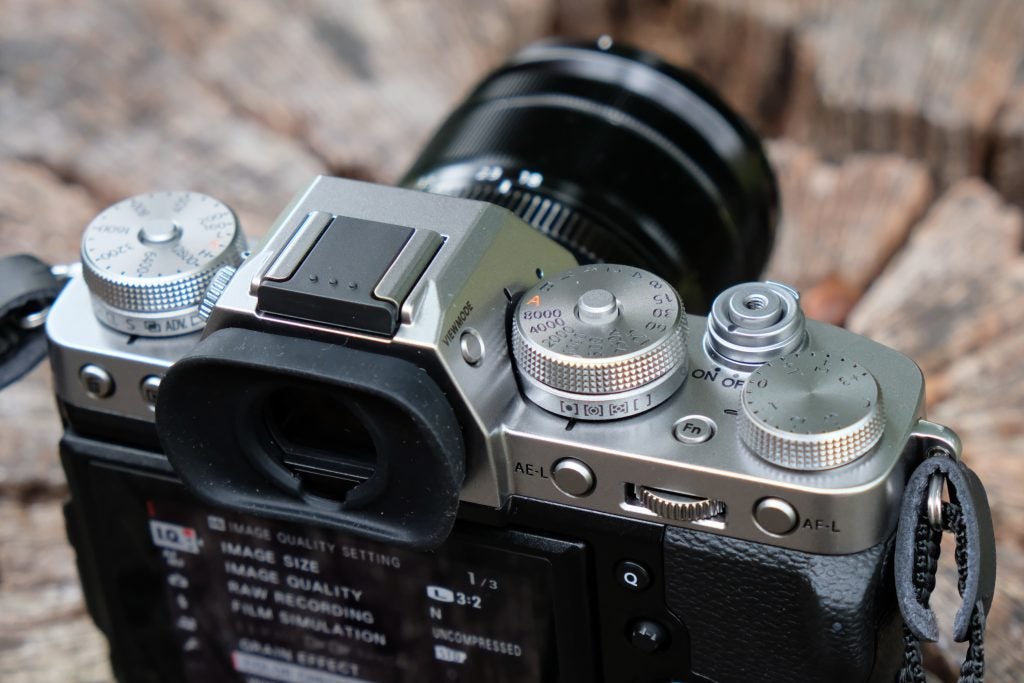
The electronic viewfinder is one of the best on any mirrorless camera and is slightly more comfortable than the X-T2’s.
Despite these improvements for still photos, the biggest change from the X-T2 is probably video performance. The Fujifilm X-T3 has pretty much everything covered with the notable exception of in-built image stabilisation (IBIS), which Fujifilm has reserved for the larger X-H1.
You can shoot 4K at 60fps with 10-bit colour depth, which puts it up there with the Panasonic GH5, as well as 1080p at a slo-mo 120fps. Because it supports the efficient H.265 compression format, the X-T3 can record that 60fps footage at 200Mbps too. Shoot at 30fps, at it’ll use the whole of the sensor (rather than a 1.18x crop) and go up to a very high quality 400Mbps bit-rate.
Other settings help make it a very versatile little video camera. All of Fujifilm’s classic ‘film simulation’ modes, which replicate their analogue forebears, are available for video, while face and eye detection work here as well.
Handily, you can also have separate settings for things like exposure and sharpening stored for both stills and video, which helps when switching between the two. The only real limitation is that you’re still restricted to 30 minutes of recording for 4K at 30fps, or 20 minutes at 60fps.
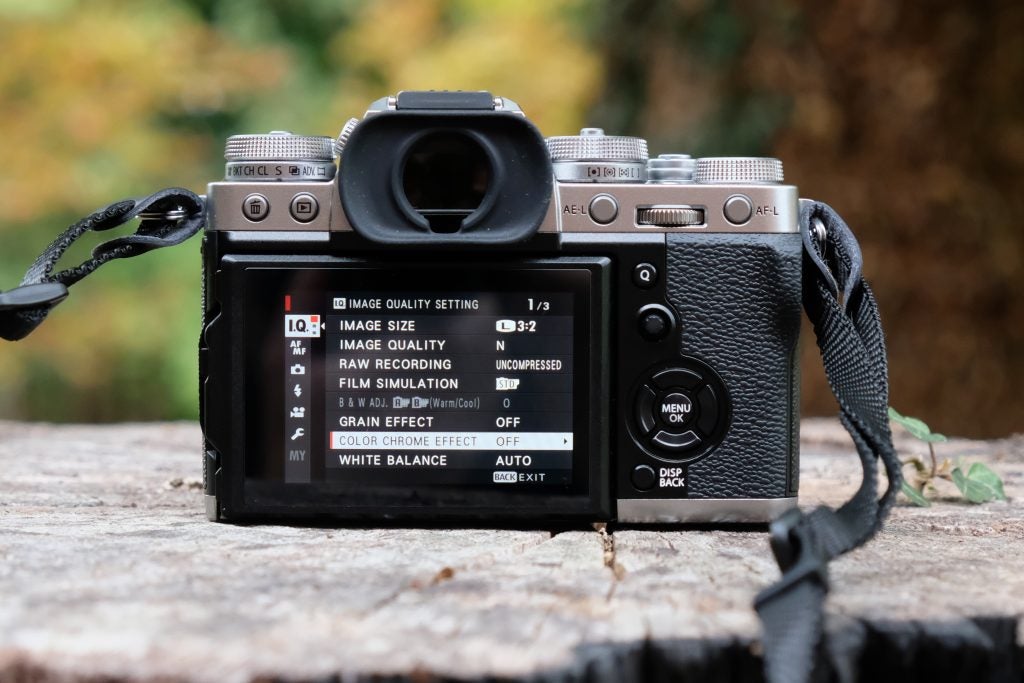
The X-T3’s auto white balance mode works well in most situations, although you can also assign it to one of the many customisable buttons.
Dig deeper into these menus and you’ll find the final improvements Fujifilm has made over the X-T2. There’s now the ‘Eterna’ film simulation, a classic ‘soft’ look that first arrived on the X-H1. You can also tweak the temperature of the excellent monochrome simulation from cool to a more sepia-like warm. And, as before, you can create up to seven of your own film simulations.
All of this makes the X-T3 a great choice if you’re looking for superb out-of-camera JPEGS, rather than spending hours in Lightroom.
So what is the X-T3 missing? The big ones are that in-built image stabilisation and a new battery. It does promise around 390 shots from a charge, which is up from 340 shots on the X-T2, but I didn’t find there to be much difference in reality.
That is only just over half of the battery life of the admittedly larger and pricier Sony A7 III, and significantly less than a DSLR like the Nikon D500. As a guide, I burnt through two batteries during my fairly intense day at Goodwood. It’s not a big failing, just something to bear in mind if you’re expecting DSLR-like endurance.
If you like your cameras to fire snaps straight to your smartphone, the X-T3 has you covered here too. Connect to its Wi-Fi network, and you can set up Auto Image Transfer to fling your latest snaps (in compressed form, or full-size) to your phone. Just so your iPhone knows how far it has to go before it can challenge a full-size, APS-C camera.
Related: Nikon Z6 vs Nikon Z7: what’s the difference?
Fujifilm X-T3 – Image and video quality
Does the X-T3 live up to the promise of its spec sheet? Looking at its lab test results and real world performance, it most certainly does.
It performed very well in our resolution and noise tests, largely thanks to that new back-illuminated sensor and the lack of an optical low pass filter, which helps improve sharpness and detail.
In our resolution tests, detail only started to noticeably drop after ISO 6400, with levels still impressively high even at ISO 12,800. And when shooting our diorama setup, noise was very controlled up to ISO 3200 (with shots between ISO 80 and ISO 800 completely free of noise). In fact, the performance at ISO 12,800 makes that a perfectly acceptable mode to switch to if you’re in really challenging low light. The extended ISO 51,200 setting is best avoided though.
The X-T3’s real world results, whether shot in RAW or JPEG, are just as impressive. That traditional Fujifilm strength, out-of-camera JPEGs, is as strong as ever, with shots looking rich and detailed. The combination of improved autofocus and face detection with all the usual film simulation modes makes the X-T3 an incredibly fun camera to shoot with too, particularly at varied events where you’re snapping portraits one minute then unpredictable, speeding cars the next.
Another bonus on this front are the X-T3’s 16 film simulation modes, which give you some extra creative options without going overboard in an Instagram filter fashion. I particularly liked the new option of making subtle adjustments to the colour temperature of the monochrome mode, which helps you refine your black-and-white game.

The X-T3’s many film simulation modes can help give your shots a suitably vintage feel without overdoing the effect

Out of camera JPEGs like this have natural skin tones and accurate colour that needs little post-processing.

The X-T3’s improved face and eye detection helps you quickly prioritise faces in scenes like this.

Pair the X-T3 with a fast prime lens like the XF 35mm f/2 and it makes for an excellent street photography sidekick.

The Eterna film simulation’s subdued colours are just as handy for stills as they are in video.
Video hasn’t traditionally been a strong point for Fujifilm, which means the Fujifilm X-T3 is something of a landmark camera for the company. On paper, it’s a very impressive video shooter, with the ability to capture 10-bit 4K video at 60fps. That’s something no other mirrorless camera can match.
That footage looks as good as the spec sheet suggests too – it’s crisp and detailed, with the single and continuous autofocus working almost as well as they do in stills mode. There are loads of options for advanced videographers too, including focus peaking, adjustable zebra warnings, a 120fps slow-mo mode, and handy touchscreen controls.
Perhaps the only slight downside is the X-T3’s lack of in-body image stabilisation, which means you’ll probably want to mount it on a gimbal or tripod to really make the maximise its video quality. But for most amateurs who want a side of video to go with their delicious stills, the X-T3’s video skills are a real bonus that make it a true mirrorless all-rounder.
[videoai]Related: Best mirrorless cameras
Why buy the Fujifilm X-T3?
The new wave of mirrorless full-frame cameras led by the likes of the Nikon Z7 may have grabbed recent headlines, but the impressive Fujifilm X-T3 is a sharp reminder that smaller, more affordable APS-C cameras are a fantastic option for both amateur improvers and pro snappers.
With its many improvements to autofocus, burst shooting and video, the Fujifilm X-T3 is now more of a ‘mini X-H1’ than a ‘larger X-T20’. In fact, other than pricier full-frame cameras like the Sony A7 III and rumoured Sony A7000, the Fujifilm X-H1 is probably this camera’s closest rival. Its main benefit is in-body image stabilisation (useful for handheld shooting, particularly in low light), although it’s also a fair bit chunkier.
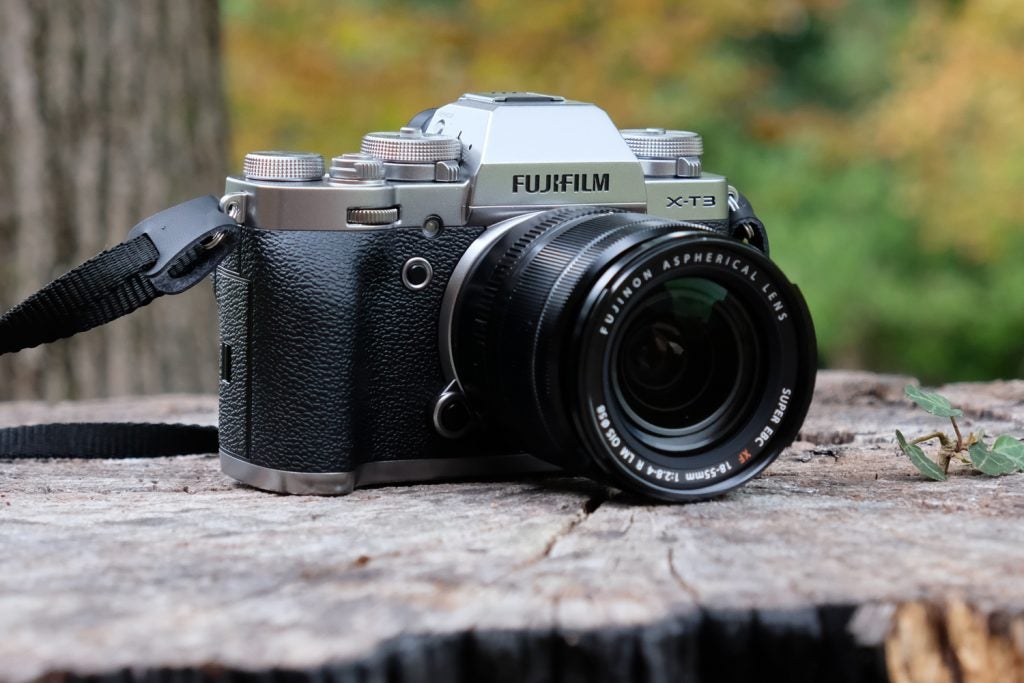
When you consider price, size, lens choices and performance (in both stills and video), it’s hard to find fault with the Fujifilm X-T3 as a versatile all-rounder. It combines Fujifilm’s excellent film simulations and out-of-camera JPEG performance with boosted 4K video skills that put it in the ballpark of rivals like the Panasonic GH5. At £1,349, it’s a strong contender for mirrorless rivals like Sony’s A6500, and a terrifying prospect for ageing DSLRs like Nikon’s D500.
The only slight downers are that lack of in-built image stabilisation and mediocre battery life. But these are unlikely to be deal-breakers when you consider strengths like its speedy autofocus, classic design and huge choice of lenses (many of which have stabilisation themselves). Whatever you like to shoot, the Fujifilm X-T3 will cheerfully oblige – and help you have a lot of fun in the process.
Trusted Score
Features
| Megapixels (Megapixel) | 26.1 |
| Image Sensor | APS-C X-Trans CMOS 4 |
| ISO settings | 160-12800 (80-51200 extended) |
| LCD Monitor | 3in, 1.04-million-dot LCD |
| Viewfinder | 0.5in, 3.69 million dots |
Physical Specifications
| Dimensions Width (Millimeter) | 132 |
| Depth (Millimeter) | 58.8 |
| Length (Millimeter) | 92.8 |
| Weight (body only) (Kilogram) | 539g |


